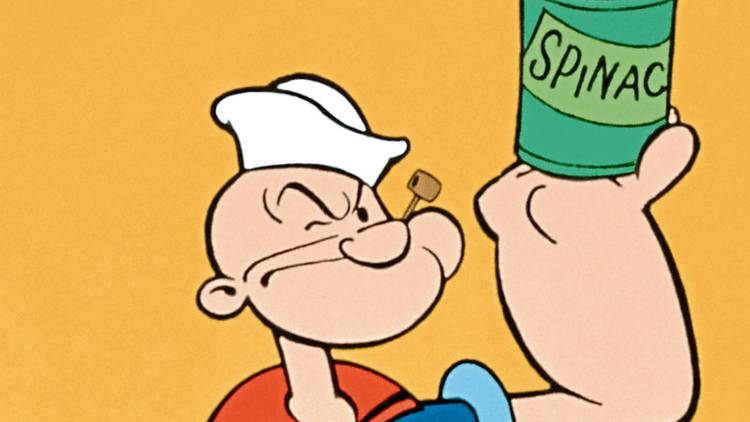Popeye’s Spinach: From Cartoon Power Food to Cultural Slang
Most people know Popeye the Sailor, the classic cartoon hero who instantly becomes stronger after eating a can of spinach. The character, created in 1929 by American cartoonist Elzie Segar, popularized spinach as a symbol of strength for generations of children. What many may not realize, however, is that spinach also carried a cultural meaning beyond its role in the cartoon—it was sometimes used as slang for cannabis in early 20th-century music and subculture.
This article explores the origins of Popeye’s spinach, its surprising connection to slang, and the broader cultural context of cannabis references in music and society during the 1920s and 1930s.

Popeye and the Spinach Connection
When Popeye debuted in comic strips and later in animated cartoons, spinach became the character’s trademark. Every time Popeye faced defeat, he would reach for spinach, which instantly gave him the strength to overcome challenges.
The choice of spinach was not accidental. In the 1920s and 1930s, spinach was promoted as a highly nutritious vegetable, especially rich in iron and vitamins. Campaigns from the American Spinach Growers Association capitalized on the Popeye phenomenon, boosting spinach sales in the United States. According to some historical accounts, spinach consumption reportedly increased by more than 30% in the years following Popeye’s rise in popularity.
Spinach as Slang in Jazz Culture
Beyond its literal meaning, “spinach” was also a slang term for cannabis in the early jazz era. The term appeared in songs and performances in the 1930s and 1940s, particularly in jazz clubs where cannabis use was more openly associated with musicians and nightlife.
One notable example is The Spinach Song (I Didn’t Like It the First Time), performed by Julia Lee and Her Boyfriends in Kansas City jazz clubs. The lyrics playfully described spinach as something that initially felt unusual but later became enjoyable—interpreted by many as a metaphor for cannabis use.
At the time, other slang terms such as “muggles,” “reefer,” and “gage” were also common in jazz culture, further illustrating how cannabis references were woven into the music scene.

Anti-Cannabis Campaigns and Exaggerated Claims
During the 1930s, anti-cannabis campaigns in the United States frequently portrayed the substance as dangerous and capable of producing exaggerated effects. Some opponents even claimed cannabis could make people feel invincible or give them “supernatural” powers.
These claims echoed the superhuman transformation of Popeye after eating spinach, though the cartoon itself was intended as light-hearted entertainment rather than social commentary. Still, the overlap between slang usage and popular culture has fueled curiosity about whether audiences interpreted Popeye’s spinach as more than just a vegetable.
Popeye’s Sailor Identity and Exotic Plants
As a sailor, Popeye was often portrayed as worldly, familiar with foreign ports, and surrounded by unusual foods and herbs. Historically, sailors played a role in introducing cannabis to parts of the United States during the late 19th and early 20th centuries, particularly through ports along the Gulf of Mexico and New Orleans—cities closely connected to the growth of jazz culture.
Although Popeye’s creators did not confirm any intentional link between the character’s spinach and cannabis slang, the coincidence has continued to spark cultural discussions decades later.
Cannabis References in Later Popeye Lore
In later decades, small references linked Popeye again to cannabis culture. For example, in the 1960s, Popeye’s dog was named Birdseed. At the time, hemp seed was commonly used as bird feed, adding another subtle layer of association.
Whether intentional or not, these connections illustrate how cultural symbols can evolve and take on meanings beyond their original purpose.

The Lasting Legacy of Popeye’s Spinach
Regardless of slang or cultural associations, Popeye’s influence on spinach consumption and popular culture is undeniable. Generations of children grew up associating spinach with strength, and nutritionists continue to promote leafy greens as part of a healthy diet.
Meanwhile, the slang connection remains a fascinating footnote in cultural history, reminding us of how language, art, and society intertwine.
Conclusion
Popeye’s spinach is best remembered as a wholesome symbol of strength and determination. Yet, for those familiar with early jazz culture, the term also carried another meaning—as slang for cannabis. Through songs like The Spinach Song and the backdrop of 1930s jazz clubs, spinach became part of the coded language of musicians and audiences.
While the creators of Popeye likely intended the vegetable in its literal sense, the cultural overlap highlights the way symbols can shift and take on multiple layers of meaning. Today, Popeye’s spinach remains both a reminder of the power of vegetables in popular media and a quirky example of how slang connects different worlds—nutrition, entertainment, and subculture.
